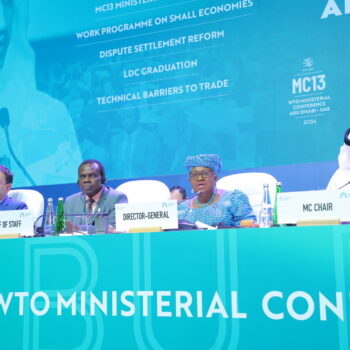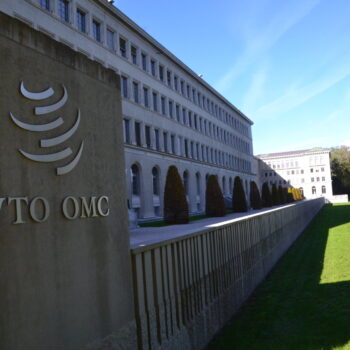Over the past months strong political support has been built for delivering a regional electricity grid in the North Seas waters. On the 23rd of October the Benelux Secretariat examined where the North Seas Countries Offshore Grid Initiative (NSCOGI) should go next during a one day stakeholder conference. NSCOGI was established in 2010 when the then Belgian Minister for Energy, Paul Magnette, set out a vision for developing and sharing power in the Northern Seas. It was followed by the signing of a Memorandum of Understanding between ten Governments and the establishment of three intergovernmental Working Groups on the design of a future grid, market mechanisms to support regional cooperation, and ways to improve the planning process.
At the conference, the current Belgian Minister for Energy, Marie-Christine Marghem, announced that she will back the prospect of a new five year plan for the NSCOGI and discuss priorities with her counterparts at the next EU Energy Ministers meeting on the 26th of November. The same message of intent was repeated on the 17th of November in front of the business community at the annual conference of the European Wind Energy Association.
Maroš Šefčovič, Vice-President of the European Commission in charge of the Energy Union, also made it clear that the European Commission sees an important role for a revitalized NSCOGI within the Energy Union.
On the 18th of November the Commission’s support went further, announcing the creation of a High-Level-Group for regional cooperation in the North Sea within the “State of the Energy Union” report:
“Member States and stakeholders have shown a great interest in cooperating in the Northern Seas region. Almost half of capital expenditure for all electricity Projects of Common Interest will be invested in the Northern Seas region. The Commission therefore intends to create a High-Level-Group for regional cooperation in the North Sea in order to tackle the regulatory, financial and spatial planning issues which impede the implementation of these projects.”
VP Šefčovič also recognised the leadership role of the Dutch Government in promoting the development of the NSCOGI during the upcoming Dutch Presidency of the European Union in the first half of 2016.
According to their work programme, the Dutch Presidency
“intends to address the potential of North Sea regional cooperation in a High-Level energy meeting on the 4th February. The focus will be on better coordination of market actors and governments on regulation and spatial planning, thereby reducing costs for the construction of offshore windmills and the rollout of an electricity infrastructure.”
Next Steps
The next phase could start with a series of practical steps such as agreement on common safety standards for hoisting repair staff onto turbines and agreement on common blade design so that delivery ships do not have to be reconfigured for every individual project.
A second important step could be mapping the variety of different interests (energy, military, marine, tourism, industrial, etc) and coordinating the environmental legislation that regulates development and planning in the area. Public support for any development will be critical, particularly within communities that have an interest in the sensitive coastlines that border the North Seas. NSCOGI can provide a facilitation role in sharing best practice in public consultation and ownership of new energy assets.
A further step forward could be the identification of test projects which would significantly benefit from support of the European Fund for Strategic Investments (EFSI) managed by the European Investment Bank (EIB). Over the last 5 years, the EIB has provided more than €5 billion for investment in offshore wind farms in the North Seas off the UK, Belgian, Dutch and German coasts, as well as offshore networks to connect these wind farms to the shore. At the end of October the EIB agreed to provide £225 million (€320 million) for the Galloper Wind Farm project to be constructed 27 km off the Suffolk coast. This is the first UK project to be backed by the EFSI, and the UK’s first pre-construction offshore wind project finance deal.
Next steps should include the creation of a Special Purpose Vehicle under the EFSI. This would further foster needed anticipatory investment in offshore grid infrastructure by lowering the cost of capital, and help promote common financing models which recognise the wider societal gains and not just a narrow cost-benefit analysis of a particular interconnector.
Signing a new Memorandum of Understanding under the Dutch Presidency that defines next phase of the NSCOGI would provide a key milestone towards the market reform and governance measures that the EU is putting together to implement the 2030 climate and energy package.
Successfully completing these immediate steps would build the confidence and mutual trust which is needed to establish an Independent System Operator that is capable of evaluating the various costs and benefits, impact on energy prices, and requirements for network development without potential conflicts of interests. In her speech on a new direction for UK energy policy, the UK Secretary of State for Energy and Climate Change Amber Rudd stated that:
“there is a strong case for greater independence for the system operator to allow it to make the necessary changes […] we will work with National Grid, Ofgem and others to consider how to reform the current system operator model to make it more flexible and independent”.
The Prize
The primary beneficiary will be the consumers. The system benefits from trading power across borders will lower the overall cost of electricity for everyone. More coordinated and strategic grid planning across onshore, offshore and cross-border regimes could save between €2 and €14 billion in the period to 2030, whilst sharing of system balancing resources with neighbouring countries can save a further €4.5 billion each year. Increasing interconnection will reduce the need for expensive back-up generation capacity in each national market.
Regional electricity markets will allow the roll-out of new digital energy services at scale and will help better manage the demand for electricity in more flexible and cost-effective way. The resulting evolution in new “smart grid” technology will make this a “Silicon Valley”-scale industrial project, where Europe can end up selling our expertise to the rest of the world.
Lower oil prices and the depletion of fossil fuel reserves in the North Seas will see a major contraction in the marine engineering capability that has been built up over the last forty years. Investment in North Seas wind power and grid infrastructure provides one of the best ways of retaining employment in declining industrial ports.
The creation of a free-trade zone for renewable power is also critical to the next phase in the transition to a zero-carbon electricity system. Offshore wind could provide 8% of Europe’s electricity needs by 2030, dramatically lowering our reliance on imported fossil fuels and improving our overall energy and climate security. The North Seas Grid is therefore one of the critical projects to demonstrate that Europe can do what it takes to keep within a 2-degree rise in global temperatures while boosting growth and increasing energy security.








